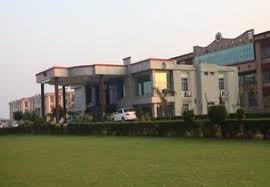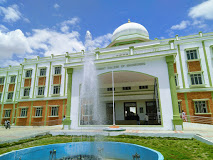
Indian Institute of Technology Madras and National Institute of Ocean Technology (NIOT) Researchers are working towards developing better turbines that can harness the power of ocean waves to generate electricity. Their most recent studies on turbine-chamber coupling have been published in the reputed peer-reviewed International Journal of Energy Research.
Daily Current Affairs Quiz 2019
The increasing demand for energy is one of the most challenging problems of the global economy, even survival, in the twenty-first century. Coupled with dwindling fossil fuel reserves and increasing awareness of pollution issues, there is now an urgent need to develop renewable energy options.
The Research is being headed at IIT Madras by Dr. Abdus Samad, Associate Professor, Department of Ocean Engineering, who works towards extracting energy from the ocean waves. The work of Dr. Abdus Samad and his research team is aimed at meeting Renewable Energy and Climate Change objectives of the Government of India.
Highlighting the applications of this research, Dr. Abdus Samad said, “While solar and wind energy has been the flagship for renewable energy research, these options are not the only direct unlimited source of power. India’s long coastline and many estuaries and gulfs provide ample opportunities to harness wave power to meet rising energy needs and the Department of Ocean Engineering, IIT Madras, under the aegis of the Indian Government’s Department of Ocean Development has been working to bring wave energy closer to reality since 1983.”
Recent research by Dr. Abdus Samad’s group at IIT Madras, in collaboration with National Institute of Ocean Technology, is being funded by Ministry of Earth Sciences, Government of India, and focuses on improving the devices and machines used for wave energy harvesting.
The Research Team comprises of Mr. Aravind George, Ms. Suchithra Ravikular, Mr. R. Ananthnarayan, and Dr. Abdus Samad from the Department of Ocean Engineering, IIT Madras. Mr. George is the first author of the paper, and he is now at the University of Melbourne, Australia, completing his Ph.D. On the other hand, the scientists, Mr. Prasad Dudhgaonkar, Mr. Biren Patnaik, and Dr. Purnima Jalihal are from NIOT. Dr. Jalihal is the Head of Energy and Fresh Water group of NIOT.
The challenges to realizing practical wave energy have been that while waves harbor copious energy, they are also unsteady and the ocean has unpredictable forces acting on the energy devices. Efficient recovery of energy from waves hinges on improving the performance of devices that convert inconsistent wave movement to electricity.
Elaborating on this, Dr. Abdus Samad said, “Wave-energy harvesting turbines capture the energy of the periodic up-down motion of ocean waves through a device called Oscillating Water Column. One such turbine called impulse turbine is connected to a generator which converts the mechanical energy into electrical energy. The turbine uses the energy of a high-velocity air jet created by the waves in the device.”
The aerodynamic performance of the turbine plays a major role in the wave-to-wire conversion efficiency. The coupling between the hydrodynamic process of the wave energy absorption and the turbine’s aerodynamic process is affected by the interplay between the pressure in the oscillating water column and the airflow rate through the turbine.
This interplay is called the damping effect. The variability of waves induces varying turbine speed, which in turn affects damping. Dr. Abdus Samad and his team analyze the running characteristics of a turbine connected to an oscillatory airflow test rig and subjected to varying rotational speeds.
In their recently published paper, the team presents the variations of pressure drop and pressure coefficient along with damping characteristics of the test rig, based on acceleration and deceleration of the turbine. In effect, they present the characteristics of the turbine-chamber coupling.
This work by Dr. Abdus Samad’s team offers a good launchpad for future research in the area of wave power. Such future research would examine the power output of the turbine, the turbine mean efficiency, and the chamber efficiency to relate turbine‐chamber coupling in greater detail, which would help in the design of more efficient wave energy harvesting devices.
The turbine is the heart of the wave energy system and a huge amount of research works are done through fluid dynamic analysis, experimental system development, design, and tests. To overcome the challenges coming on the way to develop from scratch to the ocean test took 7 years and more than two dozen of researcher’s work on it.
The turbines being developed are for the floating and fixed wave devices being developed at NIOT. The hydrodynamics, floating body dynamics, offshore-related aspects and integration of the turbine – generator module with the device are all being done by NIOT.





